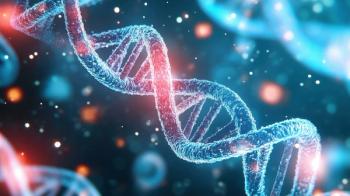
Exploring Molecular and Sex-Based Differences in Depression
It is now known that early life stress may have an impact on adults later in life, and that men and women may respond to depression differently, but why that is so is not thoroughly understood. At the 73rd Annual Scientific Convention of the Society of Biological Psychiatry meeting in New York City, May 10 to 12, Eric J. Nestler, MD, PhD, gave an opening plenary called “Sex Differences in the Molecular Basis of Depression.”
This page contains sponsored advertising.
It is now known that early life stress may have an impact on adults later in life, and that men and women may respond to depression differently, but why that is so is not thoroughly understood.
At the 73rd Annual Scientific Convention of the Society of Biological Psychiatry meeting in New York City, May 10 to 12, Eric J. Nestler, MD, PhD, gave an opening plenary called “Sex Differences in the Molecular Basis of Depression.”
Nestler, the Nash Family Professor of Neuroscience and Director of the Friedman Brain Institute, studies the molecular mechanisms of depression and addiction in mice models. He talked about the focus of his work at his laboratory at the Icahn School of Medicine at Mount Sinai.
Depression is common, chronic, and debilitating, and current antidepressant therapies are not effective for everyone. The mechanisms that precipitate depression, such as stress, are incompletely understood.
Nestler's lab, as well as others, are using chronic stress models in mice and using RNA sequencing to identify changes in gene expression and associated changes in chromatin regulation, associated with depression or antidepressant treatment—changes in chromatin structure are associated with DNA replication and gene expression.
By using several chronic stress models in mice and examining why some can behave normally after being exposed to stress, as well analyzing human postmortem brain tissue, the hope is that more precise drug targets can applied, especially ones that account for the way that depression is expressed genetically in men and women.
Rather than focus on specific genes, Nestler said his lab takes an open-ended approach, using next-generation sequencing methods to capture all the RNAs expressed.
“We don’t always know about the brain or its diseases to always guess right,” he said. Scientists don’t always know which gene or protein to study, he said.
Originally, researchers hypothesized that resilience meant that “a lack of bad things” might happen to the mice, but as many more gene changes were expressed in resilient mice compared to nonresilient nice, Nestler said it suggested that resilience really means a state of plasticity in the brain.
Animals that might become prey to the effects of stress might lack that adaptability, so potential drugs that target that the ability to rebuild natural resilience, rather than unwinding the effects of negative events, might be a novel approach for treatment.
In one study, mice were exposed to chronic social defeat stress for 10 days and then RNA sequencing was performed 48 hours afterwards. One-third of the mice avoided abnormal behavior after the experiments and were termed resilient mice; the remaining were susceptible to the effects of the stress.
Another study exposing mice to identical chronic variable stress for 21 days produced mice that were similar in how they behaved, but the gene expressions between male and female mice were different.
Looking at brain tissue from 2 brain banks, researchers have found more gene abnormalities in the brains of depressed men compared to depressed women. There was only 5% to 10% of concordance in gene overlap and this has been replicated in other studies, he said.
Taken together, the data suggest that depression is a fundamentally different syndrome in men and women, he said. It makes the case for sex-specific targeted treatment, he said.
The convergence between chronic stress models in mice and human depression is not seen in other human conditions, like schizophrenia, autism, or bipolar disorder.
Another part of Nestler’s work looks at how early life stress increases lifelong stress susceptibility. Early life stress is one of the strongest known risk factors for depression.
In mice studies, there is a particular window in between birth and weaning when mice were the most susceptible to stress, which creates a pattern of gene expression that resemble the effect of adult stress.
Identification of what Nestler called life-long chromatin scarring is a research priority, he said.
Newsletter
Stay ahead of policy, cost, and value—subscribe to AJMC for expert insights at the intersection of clinical care and health economics.









































